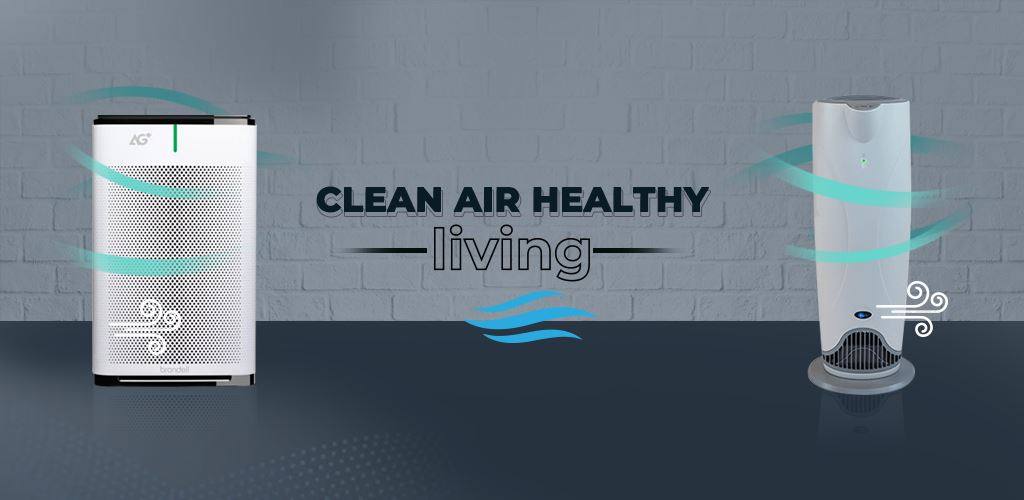
How to Choose an Air Purifier to remove dust mites
Dust, pollen, and allergies are the main cause of the millions of people sneezing and wheezing every day. The situation cannot be treated lightly as these same dust mites and pollens can become a significant indoor trigger to worsen the symptoms. While they are hard to get rid of, you may still take precautionary steps to ward off the danger brought about by the dust mites living in your home textiles. Using air purifiers with high-efficiency particulate air (HEPA) helps filter the fresh air fighting these mites and allergens alike. A highly efficient air filtration system is facilitated by the airborne nature of such particulate matter. Air purifiers let you breathe clean air and prevent any adverse effects on the respiratory system.
Factors to consider while choosing an air purifier for dust mites

As already discussed, being exposed to dust mites and pollen on an ongoing basis can negatively affect overall health. The degree of risks and their severity can lead to symptoms ranging from mild to severe that could turn chronic in the long run. Persistent sneezing, cough, runny nose, congestion, watery eyes, etc. - you could not ask for anything worse. Here, the selection of a top-quality air purifier becomes a must. HEPA protection, powerful germicidal UV lamps, replacement filters, Hi-C weave filters, broader coverage, etc. - there are so many factors to consider to cover every dimension of the indoor setting. Let us explore all such aspects to choose the purifier of our dreams!
1) Filter for cleaner air effectiveness
The efficiency of the filter type can be defined by the size and type of the microscopic particles it satisfactorily removes. Dust mites are microscopic insect-like pests that could be anywhere, including pillows, mattresses, clothing, or carpets. These are directly in contact with the person inhaling. The particulate matter needs a microscopic measure for which the HEPA becomes a significant consideration. A HEPA (High-Efficiency Particulate Air) filter removes 99.97% of all particles as small as 0.3 microns from the air that passes through it. The percentage defined measures the intensity and the effectiveness of cleansing the air.
2) CADR is crucial
Clean air delivery rate defines the amount of particle-free air delivered into the room. CADR becomes the best measure of the true cleaning capacity of an air cleaner. This is also the measure of the effectiveness of air filters. The higher the cleaning efficiency or the CADR, the better it is to clean the airborne particles suited to a larger room. The cleaner air delivery rate applies to a higher fan speed.
3) Choosing the right size
Air purifiers are usually advertised for the room size they are recommended to fit adequately. Choosing the right sized unit determines a sufficient rate to decrease the particle levels in any space by nearly 70%. Here, a larger-sized unit installed in the same sized room could enhance the particle removal efficiency, filtering almost 90% of the pollutants in the air.
4) Opting for a better air cleaner design
Proficiently designed air filters never exhaust the filtered and cleaner air downwards. A sophisticatedly designed air purifier is not just attractive but also works effectively to blow away the allergens that are carpeted or deposited on the floors, curtains, clothing, etc. On the other hand, in order not to negate the impact of the air filter, the purifiers should be efficient in revolving the cleaner air throughout the space and not just direct it downwards.
Breathe pure and live healthier

Dust mite, pollen, and other such allergen removals through the air purifiers limit the exposure in a space where mite concentration is the highest. Air cleaners prove worthy for allergy sufferers where the allergens remain airborne long enough to be incessantly inhaled. A significant portion of air volume passes through these cleaners that absorb and filter the particulate effectively. The above-stated factors tell us how to choose an air purifier that is a specific upgrade in the healthcare setting. These HEPA filters, when chosen wisely, can be installed in spaces including offices, schools, rooms, hospitals, nursing homes, and wherever else necessary!

Leave a comment